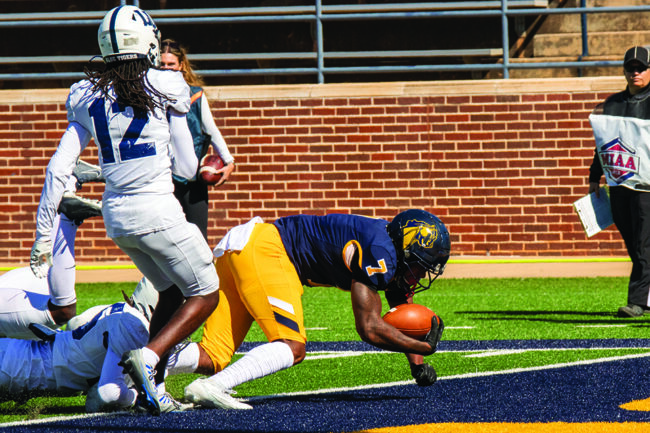Pay for play at college level widens gap between competing schools
CJ Craig
Contributing Writer

The world of college sports was flipped on its head in 2021 when the NCAA allowed players to get paid for their name, image, and likeness (NIL). This opened the door for college players to earn money and receive bonus gifts from their universities, such as getting a new truck like the University of Utah did for many of its recruits. It’s a completely different era of sports compared to the days of Dez Bryant in 2009, when the Oklahoma State star was suspended for having lunch with Deion Sanders.
Some of the more famous college athletes now have incentive to stay in school since the money they make from NIL is more than they would make on a professional rookie contract. But many questions still hang around, including whether college athletics should still be considered an “amateur” sport. UCO Assistant Athletic Director Chris Brannick said that the big NIL deals usually only come from a small group of schools with large booster support.
“There are Power 5 schools that are not succeeding the way that schools like Alabama, USC and Oklahoma are doing, so there’s a big divide within Power 5, and you still have the non-Power 5 Division ISchools, Division II, Division IIIand so on” said Brannick. “It’s very different, where a student at UCO might get an NIL deal with Chicken N Pickle, but compare that to what some of these athletes are doing on a bigger level and it’s really completely different.”
In 2023, the NIL market is estimated to be over $1 Billion across college athletics. Some of those athletes earn millions of dollars from brand deals, donations, and endorsements. However, most student athletes make a small percentage of that, only being offered smaller deals like local restaurants and social media campaigns. At the lower levels of competition, a college athlete might be limited in what kinds of endorsement deals they can take simply because their athletic program doesn’t draw as much money as some of the top-tier teams. Brannick says that even though the elite Division I Schools might warp the way we see NIL deals, at the lower levels of competition it can actually be necessary for these athletes.
“Where a big-time Division I athlete might be trying to just increase their personal brand, at a Division II level, somebody might be using NIL opportunities to pay the bills. They’re probably doing a little more out of necessity than for personal gain.”
The NCAA has come under fire regarding NIL simply because there isn’t a uniform set of standards that programs can adhere to. Currently, NIL deals are based on state law and regulation, so each program has different ways of conducting NIL deals and how they regulate them. This can create some problems for states whose legislature has yet to pass NIL laws into effect. 32 states have passed NIL laws, including Oklahoma, which recently put the law in place in May earlier this year.
Brannick said that the NCAA needs to address the issues by implementing a set of standards that universities can operate under.
“It is a bit of a wild west though, you know? I mean there were laws that governed society back then, people just kind of did as they pleased,” Brannick said. “I think that’s similar with NIL, there are rules in place to govern that program, but it’s a wide open deal right now and there’s a lot of workarounds.”

